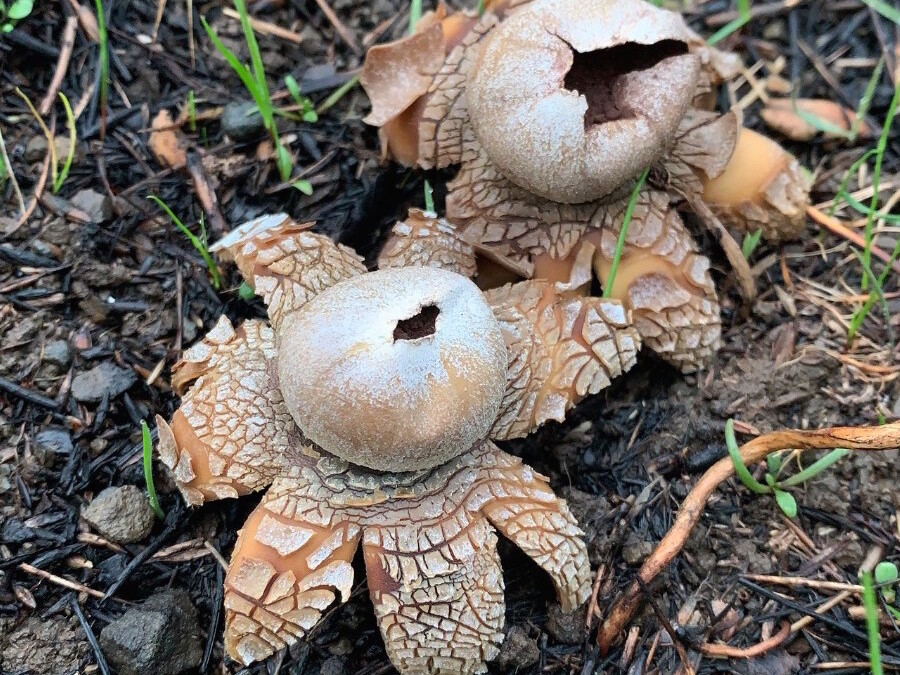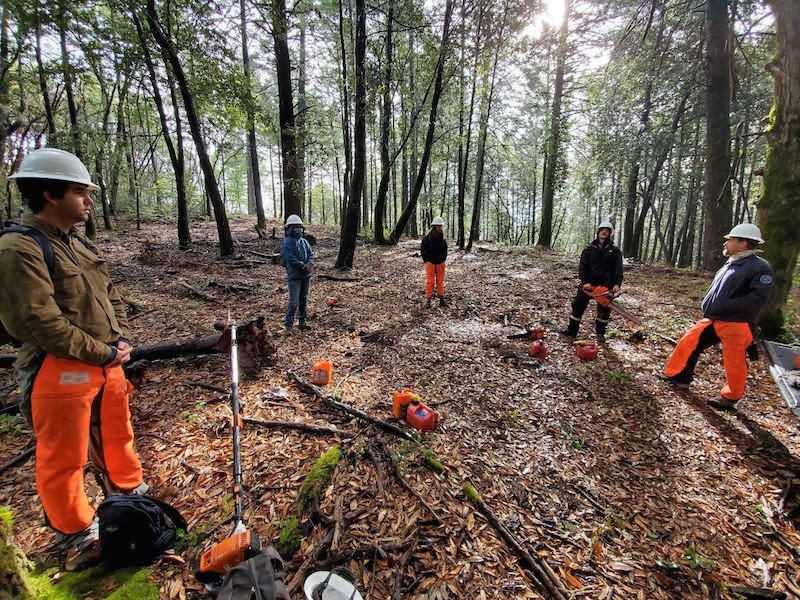
Watch Nature Heal at Sugarloaf
With most trails reopened, green shoots growing and animals returning, Sugarloaf Ridge State Park is the place to be to see the land recover from wildfire. The park—operated by Sonoma Ecology Center on behalf of the California State Parks system—has reopened all but...

Our Parks Remain Open, but Events Are Canceled
In response to the coronavirus pandemic, Sonoma County has imposed a new stay-at-home order starting Saturday, Dec. 12 and ending Saturday, Jan. 9, 2021. This order will result in the following changes to Sonoma Ecology Center’s events and services: * At Sugarloaf...

Three Years Later, the Cat Came Back
Beloved SEC Employee Deb Hennessy Reunited with Her Beloved Cat Mordecai The wildfires of 2017 were harrowing for Sonoma Valley residents. For Deb Hennessy, they led to the loss of a four-legged friend. In the early morning hours of Oct. 9, 2017, Deb, a Glen Ellen...

Post-Fire Work and Wattle Workshops Mark Start of Rainy Season for SEC
As the season’s first rains begin to fall, and with dozens of burned structures left behind by the Glass fire, Sonoma Ecology Center has hit the ground running—or more precisely, wattling. With the relaunch of our Watershed Protection Program—designed to shore up the...

SEC Relaunches Its Post-Fire Watershed Protection Program
In 2017, wildfire left behind dozens of burned structures—a hazardous situation should rainwater wash their toxins into nearby streams. To prevent that from happening, Sonoma Ecology Center created its Emergency Watershed Protection Program, which mobilized...

In Our Divided Post-Election World, Nature Still Holds the Key
By Richard Dale While on a morning walk following this week’s Presidential Election, I found it hard not to feel overwhelmed and anxious over the outcome. Still, nature, as it often does, soon crept into my worried, looping mental soundtrack, suggesting that there are...

How Wild Animals Cope with Wildfire
Some Species Fare Well, Some Don’t—but Overall, Populations Appear to Rebound Humans fled by the tens of thousands in Sonoma and Napa counties this summer as the Glass Fire bore down on their communities. But other species’ homes and communities were threatened too,...

Red Barn Remembrance
‘It served as habitat for our feathered and furry friends, a cool refuge for hikers on hot or rainy days, and a picturesque backdrop for the occasional photographer’ Venerable barns are special places, Breck Parkman says, with special meanings for those who know them....

SEC’s Sugarloaf Operators Reassess Following Glass Fire
With Red Barn Gone and Revenues Down, Valley’s Beloved State Park Must Regrow and Rebuild Park operators from Sonoma Ecology Center are still taking stock of the damage at Sugarloaf Ridge State Park following the Glass Fire. And even though an estimated three-quarters...

A Call for Landowners in the Upper Nathanson Creek Watershed
Are you a landowner in the upper Nathanson Creek Watershed? If so we’d love to talk with you about stormwater—specifically, about potential stormwater projects that can help us better manage water when it finally arrives. (Click map to enlarge.) Fire season ends when...

Glass Fire Frays Nerves, Blankets Valley in Smoke
Dear Friends, We’re now on day five of the Glass Fire, which began in the early morning of Sunday, Sept. 27 and has since grown to more than 60,000 acres across Napa and Sonoma counties, jumping valleys and firebreaks, destroying hundreds of homes and businesses, and...

SEC’s Garrett Gradillas Leads Firefighting Team in North County
Garrett Gradillas is no stranger to fighting wildfires. After earning a B.S. in forestry from Humboldt State, and before becoming a restoration specialist for Sonoma Ecology Center, Gradillas was a wildland firefighter for the U.S. Forest Service, working fires around...

SEC Researchers Sound Alarm over Dry Sonoma Valley Waterways
Lack of Rainfall, Continued Pumping Cause Sonoma Creek and Its Tributaries to Run Dry “Try to give the creeks a break for the rest of this year.” That’s the message from Sonoma Ecology Center’s Senior Scientist and Research Program Manager Steven Lee, speaking...

How to Fight Wildfires Before They Start
Forestland Tended by Sonoma Ecology Center Is Helping to Protect Pacific Union College With smoke filling the skies around California, and wildfires burning out of control in Sonoma and Napa counties, Jason Mills is more convinced than ever that the restoration...

Emergency Information You Can Use — 2020 Edition
An unprecedented lightning storm has kicked off Sonoma County's fire season even earlier than usual this year, forcing everyone to pay closer attention to fire, weather, air quality and other conditions in order to stay informed and stay safe. That's why we're posting...

Removing Our Region’s Worst Invasive Weed
Yellow Star Thistle (Centaurea solstitialis) is the most noxious weed in western North America, covering more area here than any other invasive species. It is rampant throughout Sonoma County, degrading our native grassland habitats, ruining local ranchlands (cattle...

SURVEY: With School Starting, What’s the Best Path Forward?
[Español abajo] As we work on ways to teach kids safely in the time of coronavirus, we’re asking parents, guardians and other members of the community for input. Please fill out our brief online survey and tell us what you think. Online? Outdoor? Other? Both online...

Research Team Monitors Stream Temps
This past month, our Research team expanded on a system to monitor water temperatures throughout Sonoma Creek and its tributaries, giving us important new data on the watershed’s overall health. Responding to a need for more complete data on temperatures in the...

Mobile Kilns Bring Biochar Production to Forest, Farm and Ranch
As the planet heats up, so does interest in practical, affordable and scalable methods for drawing carbon out of the atmosphere. This helps explain the growing popularity of biochar, a “super charcoal” that improves soil, conserves water and sequesters carbon all at...

Valley Succotash
Sonoma Ecology Center Victory Gardens are now yielding summer squash, peas, and beans in gardens throughout Sonoma Valley. We asked our friends at Valley Bar + Bottle to create a recipe using these ingredients. Indigenous farming traditions across America and Mexico...
